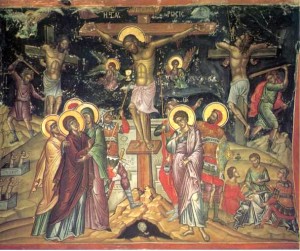 When it comes to Divine Worship, there are a lot of misconceptions people have about Catholicism. Sometimes people aren’t necessarily wrong, but the signs of the liturgy are presented as empty clichés. A lot of times this behavior even comes from fellow Catholics.
When it comes to Divine Worship, there are a lot of misconceptions people have about Catholicism. Sometimes people aren’t necessarily wrong, but the signs of the liturgy are presented as empty clichés. A lot of times this behavior even comes from fellow Catholics.
Take the Sign of the Cross. There is probably no prayer more powerful than those words combined with that motion. Yet in the attitudes of many Catholics, the sign is just a formality, or an “introduction to prayer.”
In the Bible, worship was about far more than verbal prayer. Where and how you offered worship played a very important role. The Old Testament is filled with Kings and priests who were doctrinally orthodox, but God looked down upon their worship. This was because they worshipped at “the high places.” (1 Kings 15:14, 22:44, 2 Kings 12:3, etc)
While the origins of the “high places” and the symbolism inherent in them are an interesting bible study in and of themselves, we only need to know one thing about them. God decreed that sacrifice should only take place within Jerusalem, and only within the temple. (Deuteronomy 12:1-32) Worship at the high places was a sign that the individuals doing said worship were not fully conformed to the will of God. They were making a statement that they believed God and worshipped Him, but on their terms, or the terms of the world around them.
This dynamic is in play when we worship today. When we begin our worship, we do so not through our own initiative, or because it sounds like a good idea. We come to worship because at the first Eucharist, Christ commanded that this act be done “in remembrance of me.” (Luke 22:19) This language has a very deep symbolism. In the Bible, when the word anamnesis or its Hebrew derivative is used, it is not simply an act of remembering a past event. When you give something remembrance in the biblical sense, you are making that event present and applying it to your life. Therefore when the Jews celebrated the passover, they joined themselves to the journey of their ancestors, and traced their own journey in their lives from sin to redemption.
It is within this context the sign of the cross takes. We make the sign of the cross by keeping our own memory of the Crucifixion and Resurrection of Christ. Yet we also make that sign of the cross signaling our intent to make the Sacrifice of Christ present in our daily lives. We do that by bringing our prayers and our very selves to the altar, and these are then raised up to God through the cross and with the cross. We are asking that the spirit of the cross (that of self-denial and offering everything to God) be our own spirit.
This spirit is further understood by tracing with our hands the four directions, which symbolize all of our actions in time space. When we sign the cross over our head, heart and body, we are stating that we freely apply the cross to our lives, body, mind, and soul. And when doing so, we mouth the words “in the Name of the Father, and of the Son, and of the Holy Spirit.” Our spirit of sacrifice becomes a spirit of total reliance on the Trinity.
This is why the Sign of the Cross is the most powerful prayer a Christian can offer, second only to the Mass, which is the making present of the said cross. When a holy person of God announces verbally to the world he is making the spirit of Christ his own, and applying that spirit to every act of his being, even the strongest of demons knows they have a fight on their hands. This fight is so dangerous for the demons because at such a point, their foe is not a weak and sinful man, but Christ himself. We forget that part frequently. We talk about identifying with Christ, yet we need to remember that Christ identifies with us, and fights alongside us, leading us in battle against the Devil.
With the stakes as high as they are, this is why the Devil will try to make us not take the Sign of the Cross seriously. If it becomes an empty ritual, none of these promises apply. If our actions are not joined by faith, then nobody has to worry about anything. The sacrifice of Christ will indeed be offered at Mass, but it will not be applied to the believer, because they have not made the Spirit of Christ their own. If we aren’t serious about the Sign of the Cross (or even worse, omit it entirely!), we are erecting our own high place of worship, worshipping God on our terms, not with the Holy Spirit He has given us. Keep that in mind the next time you are at Mass, and make that sign count.



